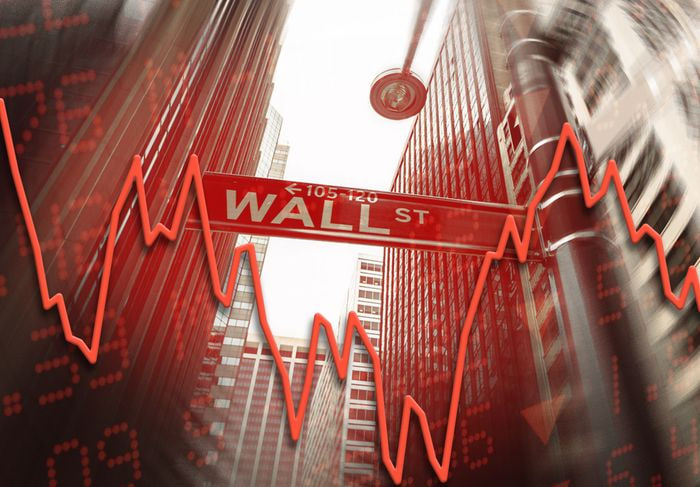Ethereum's Stellar Surge: Unpacking the Recent Price Rally and What It Means for Investors
Meta Description: Ethereum price analysis, ETH price prediction, cryptocurrency investment, blockchain technology, DeFi, NFT market, market volatility, technical analysis, Ethereum 2.0 upgrade, crypto news. Understanding the recent surge in Ethereum's price and what it means for your investment strategy.
The crypto world is buzzing! Ethereum, the second-largest cryptocurrency by market capitalization, just hit a six-month high, climbing nearly 3% in a single day to reach a price of $3655. Whoa, right? This isn't just another fleeting price bump; it’s a significant event that demands careful consideration. Are we witnessing the beginning of a bull run? Is this just temporary good fortune, or is something fundamentally changing in the Ethereum ecosystem? As a seasoned observer of the crypto markets—someone who's been navigating the complexities of blockchain technology and digital assets since the early days—I'm here to dissect this recent surge, offering you insights that go beyond the surface-level headlines. We'll delve into the potential drivers behind this impressive price action, examine the underlying market dynamics, and explore what this could mean for both seasoned investors and newcomers alike. Forget those generic, boilerplate analyses; I'll share my firsthand experience and seasoned perspective, peppered with practical advice to help you make informed decisions in this ever-evolving landscape. This isn't just about numbers; it's about understanding the why behind the price movements and navigating the often-turbulent waters of the crypto market with confidence. Get ready to unravel the mystery behind Ethereum's recent stellar performance—and discover how you can potentially leverage this opportunity.
Ethereum Price Surge: A Deep Dive
This recent price jump isn't happening in a vacuum. Several factors are likely contributing to Ethereum's resurgence. Let's break them down:
1. Increased Institutional Adoption: We're seeing increasing interest from institutional investors, hedge funds, and even large corporations exploring the potential of Ethereum's blockchain. This isn't just speculation; major players are actively integrating Ethereum-based solutions into their operations. The influx of institutional money brings stability and often fuels further price appreciation.
2. The Thriving DeFi Ecosystem: Decentralized finance (DeFi) continues to explode on the Ethereum blockchain. New protocols, innovative applications, and increased user engagement are driving demand for ETH, the native token of the network. This ecosystem is self-reinforcing; as more users flock to DeFi, the value of ETH tends to rise. Think of it as a virtuous cycle.
3. NFT Market Momentum: Non-Fungible Tokens (NFTs) remain a significant force, and Ethereum is the dominant blockchain for NFT creation and trading. The ongoing popularity of NFTs, despite some market fluctuations, continues to pull ETH prices upward. The sheer volume of NFT transactions keeps the demand high.
4. Ethereum 2.0 Progress: The ongoing rollout of Ethereum 2.0, with its transition to a proof-of-stake (PoS) consensus mechanism, is a critical factor. This upgrade promises improved scalability, reduced transaction fees, and enhanced energy efficiency. The anticipation and gradual implementation of these improvements are positively impacting market sentiment.
5. Macroeconomic Factors: Let's not forget the broader macroeconomic environment. While the crypto market is independent to some extent, it's not immune to global events. Changes in inflation rates, interest rates, and overall market sentiment can influence cryptocurrency prices, including ETH.
6. Market Sentiment and Speculation: Sometimes, it's simply the collective psychology of the market. Positive news and FOMO (fear of missing out) can drive rapid price increases. Conversely, negative news or sudden sell-offs can trigger sharp declines. It's a rollercoaster, folks!
Technical Analysis: Charts and Indicators
While fundamental analysis is crucial, understanding technical indicators is equally important. Experienced traders often rely on chart patterns, moving averages, and other technical tools to predict price movements. (Disclaimer: Technical analysis isn't a crystal ball, and it's essential to manage risk accordingly.) Currently, several technical indicators point towards continued upward momentum for Ethereum, but remember to always do your own research.
Risk Management and Investment Strategies
Investing in cryptocurrencies, including Ethereum, involves significant risk. Price volatility is inherent in the nature of the market. It’s crucial to develop a sound investment strategy, diversify your portfolio, and only invest what you can afford to lose. Never make emotional decisions based solely on short-term price swings.
Ethereum 2.0: A Game Changer
The Ethereum 2.0 upgrade is a monumental undertaking, aiming to transform the Ethereum network into a more scalable, efficient, and secure platform. This is not just an incremental improvement; it's a fundamental shift that could significantly impact the long-term value of ETH. The shift to PoS will drastically reduce energy consumption, addressing one of the major criticisms of proof-of-work blockchains.
Future Outlook: ETH Price Prediction
Predicting future prices is fraught with uncertainty. Numerous factors can influence the price of ETH, making precise predictions extremely difficult, even for seasoned analysts. However, based on current trends and developments, the outlook for Ethereum remains generally positive in the long term. The ongoing adoption, technological advancements, and the resilience of the Ethereum ecosystem all suggest a bright future. But always remember: DYOR (Do Your Own Research)!
Frequently Asked Questions (FAQs)
Q1: Is now a good time to invest in Ethereum?
A1: This is a complex question with no simple answer. While the recent price increase is encouraging, investing in cryptocurrencies always carries significant risk. It's crucial to assess your risk tolerance, conduct thorough research, and consider your personal financial situation before making any investment decisions.
Q2: How volatile is Ethereum compared to other cryptocurrencies?
A2: Ethereum is considered relatively volatile compared to traditional assets but less volatile than some other cryptocurrencies known for extreme price swings. However, it still experiences significant price fluctuations.
Q3: What are the potential risks of investing in ETH?
A3: The risks include market volatility, regulatory uncertainty, security vulnerabilities, and the potential for technological disruptions. Always be aware of these risks and manage them accordingly.
Q4: How can I buy Ethereum?
A4: You can purchase Ethereum through various cryptocurrency exchanges, each with its own fees and security protocols. Choose a reputable exchange and adhere to best security practices.
Q5: What is the difference between Ethereum and Bitcoin?
A5: While both are cryptocurrencies, Bitcoin functions primarily as a store of value, while Ethereum is a platform for decentralized applications (dApps) and smart contracts, enabling a broader range of functionalities.
Q6: Will Ethereum replace Bitcoin?
A6: It is unlikely that Ethereum will completely replace Bitcoin. They serve distinct purposes and have different strengths. Bitcoin focuses on being a digital gold, while Ethereum emphasizes its functionality as a platform. Both have significant roles in the crypto landscape.
Conclusion
Ethereum's recent price surge showcases its continued relevance and potential in the evolving crypto market. While short-term price movements can be exciting, it's vital to maintain a long-term perspective. Thorough research, risk management, and a clear investment strategy are key to navigating the complexities of this dynamic market. The future of Ethereum, fueled by ongoing developments and growing adoption, appears promising, but remember, smart investing requires patience, diligence, and a healthy dose of skepticism.



